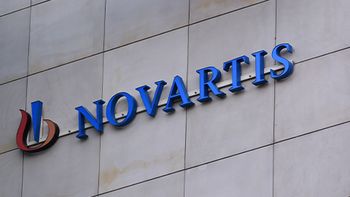
Sales forces grow to record sizes
If it seems like there are more pharmaceutical sales reps in the field this year than there have been in the past, it's because there are.
If it seems like there are more pharmaceutical sales reps in the field this year than there have been in the past, it's because there are.
The size of pharmaceutical sales forces in the top 30 companies has grown by 40% since the second quarter of 1996, according to a recent report released by The Plymouth Group, Somerset, NJ. This growth includes a 23% increase from the second quarter of 1996 to the second quarter of 1997, and a 14% jump from the second quarter of 1997 to the second quarter of this year.
The top companies had approximately 38,550 sales reps in the field in early 1996, 47,255 sales reps in the field by early 1997 and 53,965 sales reps calling on prescribers as of March 1998, the report indicated.
"The rate of increase [in the size of sales forces] is probably equivalent to what it was in the late 1980s and early 1990s, but they have never been as large as this," said Steven Gutterman, The Plymouth Group's director of strategic studies.
Sales force sizes at Bristol-Myers Squibb, Pfizer, Eli Lilly and several other top companies include contract sales reps. Novartis, for example, counted 465 contract sales reps among its 3,080-person sales force, according to the report. Bristol-Myers Squibb included 485 among its total force of 4,800.
Reasons for growth
Why are companies suddenly so gung ho to hire more reps?
New product launches are certainly one reason, according to the report. They accounted for one-third of the industry's growth. Six new product launches each generated $300 million or more in 1997 sales.
Another reason, however, may be that top companies are scrambling to reverse their overly aggressive downsizing of sales forces several years ago, when the words "managed care" were the near-equivalent of "bogey man."
"[Companies] realize they downsized too much in reaction to managed care," Gutterman explained. "Not that managed care doesn't have influence, but it didn't have as much of an influence as they thought it would have. They thought they needed fewer reps talking to the doctors because doctors wouldn't be driving health care as much in the managed care future. Now they are realizing that is not the case."
In fact, the report showed, more sales calls correlated positively to increases in the number of prescriptions per sales rep.
Some companies have tried to camouflage large sales forces behind a variety of separate division names, but The Plymouth Group also tracks physician familiarity with sales forces and found that such disguises are only moderately effective.
Where and to whom companies deploy their sales reps, however, may create room within some companies for still more sales force growth.
Here's why: Although it's commonly said that 20% of physicians are responsible for writing roughly 80% of prescriptions, The Plymouth Group found that the actual national ratio of the percentage of practicing physicians who are responsible for writing most prescriptions to the percentage of prescriptions generated is closer to 27:73. And in some markets, such as Salt Lake City, the breakdown of the market is more like 40:60.
If reps begin calling on third, fourth and even fifth decile physicians, companies may need to hire still more reps.
The report summarized: "â¦The process of reallocating sales rep alignments to comply with local area market requirements will likely spur on even further growth within pharmaceutical sales forces." PR
Newsletter
Lead with insight with the Pharmaceutical Executive newsletter, featuring strategic analysis, leadership trends, and market intelligence for biopharma decision-makers.




